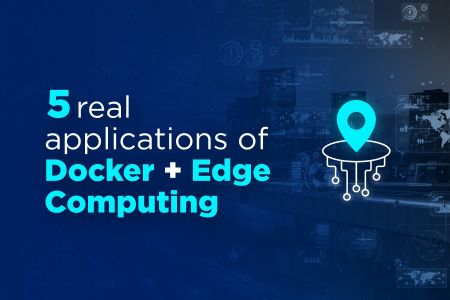
What is Edge Computing and how it reduces information delay?
As previously mentioned on this Blog in other articles related to Industry 4.0, the appearance of more complex products, with advanced intelligence and high connectivity has led to the reinvention of the world’s industry. This change gives extra space for the most diverse types of configurations and technologies. Edge Computing, the subject of today`s article, is an example of a system that aims to reduce information delay, store data and reproduce it on users` own devices.
What is Edge Computing?
Edge Computing (EC) can be considered the evolution of the current data storage system, Cloud Computing (CC), where information is placed in a cloud. The EC is formed by different data centers that transfer the processing of information closer to the user.
That means that, instead of storing all customer data in a cloud that can be many kilometers away, they are hosted on the devices themselves, causing the information delay to be reduced.
In this way, Edge Computing serves as a “mini-cloud” that holds data, allowing it to be processed more quickly, sending less information to the main data center.
The EC also helps on the transformation of technology by encouraging the development of new products that are related, in some way, with properties of Artificial Intelligence and the IoT universe, promoting greater speed and interactivity for users. The data latency, that is, the delay in the response, also decreases in this system model.
What is the relationship with Cloud Computing?
By gathering information on devices that are in direct contact with the user, Edge Computing becomes a complement to Cloud Computing, a system that collects information in a data center distant from the user.
The EC can be both a substitute for the CC, causing the data to be stored only on the device, avoiding a lot of processing and latency, and a complement to the CC experience, ensuring an update of the information over time.
What are the examples?
Augmented and virtual realities, autonomous cars, smart factories, smart cities, facial recognition security cameras and other everyday products that have connectivity are some examples of concepts benefited by Edge Computing.
When using these technologies, it is normal to find latency and delays in processing, which complicates and hinders the user experience. Edge Computing emerges as a solution to the problem of devices that need agile, fast and error-free responses.
The EC also enables the analysis and aggregation of local data, turning decision making into immediate, in addition to reducing risks of exposure of confidential data, since it stores them locally.
This is also beneficial for companies, which now have greater control over the spread of information. In addition to maintaining the local database, regional facilities can operate independently, even if there is an interruption in the operation of the main facility.
But what is Edge Computing good for?
EC becomes important for different sectors and social classes. For end users, it offers a faster and more consistent virtual experience. For companies, on the other hand, it improves the availability of monitoring, provides more security, less risk and greater speed of operation.
In the security sector, for example, the speed of facial recognition and the response of cameras, motion and smoke sensors causes emergency services to be triggered quickly, reducing the risks of a possible disaster.
In the retail sector, the application of EC resources increases the ability to collect information about specific stores, in addition to improving the understanding of habits and the profiles of buyers.
It is increasingly necessary to observe the development of technology and the way in which it proposes an improvement in the conditions of use and maintenance of devices. In this way, Edge Computing represents a very relevant solution to the limitations that Cloud Computing can present.




